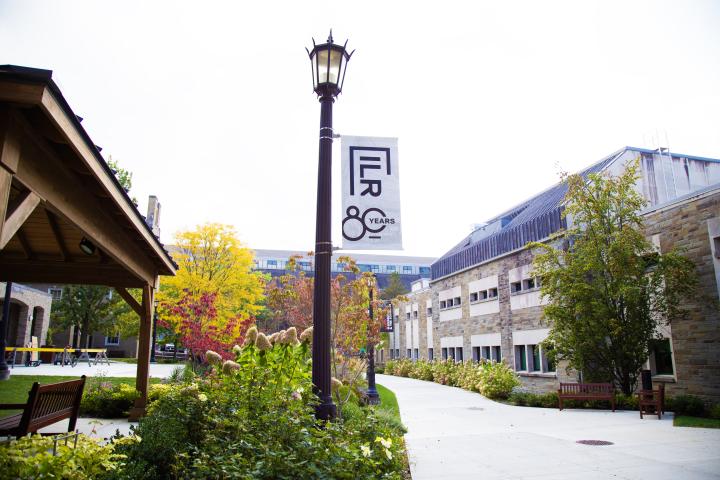
Zooming With Students, One Stats Class at a Time
ILR Senior Lecturer Elizabeth Karns adjusted her introductory statistics course, ILRST 2100, into a workable online course for nearly 600 students. Karns is preserving the allure of the physical lecture, previously taught in Statler Hall Auditorium, through recorded demonstrations, screen-shared office hours and statistical applicability of COVID-19 research shared with students from Mongolia to the dorms on North Campus.
How have you structured your online course?
I broke every lecture into smaller conceptual components. Then, I made a narrated set of PowerPoints to explain each component--students can watch these at any time. During regularly scheduled class time, I do a demonstration of the statistical ideas. This is to step through the how-to aspect of stats, along with the interpretation. At the end of the class time, I set aside an optional time to talk about COVID research, linking the statistical ideas to aspects of the pandemic. These sessions are also recorded for students to review when their schedule allows.
During our pre-COVID class sessions, I always start lectures with a picture of a Cornell outdoor spot. It can be on the Ithaca campus, New York City, Arnot Forest, etcetera. I still do this with the weekly presentations and students definitely respond. They go back and forth on the chat bar determining where it is and where the shot was taken from. Or, they will email me with the name of the place. It is a little bit of normality that was part of the in-person class that transferred easily to online class. And, it is so fun to be able to talk about Cornell places.
Are you lecturing/conducting office hours from your house?
Yes. I upgraded my internet so I could do all of it from home. This means I can answer student questions easily by having them share screens with Zoom and hold office hours, etcetera. It is much more than just the regular class time!
How are you reaching students across the country/the world?
I email with students all over the world -- Queens to Colorado to Mongolia to the dorms on North Campus. No part of the class depends on live presentation or interaction. Everything is posted and students let me know when it doesn't work as planned.
What are the challenges you've encountered throughout the transition from physical classrooms to virtual instruction?
The amount of screen time is immense–things that I would chat with a student about or draw a quick diagram take much more time. The actual lecture content is still the same, just ordered differently.
As a teacher, I respond to the energy of the class. I speed up or slow down, depending on audience reactions. That lack of feedback now is tough on a teacher.
How have you coordinated your 26 teaching assistants?
Luckily, there is another faculty member, Kevin Packard, who coordinates them. They are scattered all around the world, too. Yet, they are doing sections and going through the same things we might do on campus.
Previously, what has been the biggest class you taught? Are you drawing on past experience/expertise to guide you through?
Last year, I had a class of the same size. I have a good sense of the stumbling blocks for students such as new ideas, missing a key part, etcetera.
In a group this big, there are always some personal issues, but this crisis is much harder. Student focus understandably drifts or is completely absent when they are worried about a loved one or their own futures.
I follow up with students who miss two assignments in a row – checking in to see if they are having issues, technical or otherwise, that we need to work around. This is a time for all of us to be generous and understanding.


